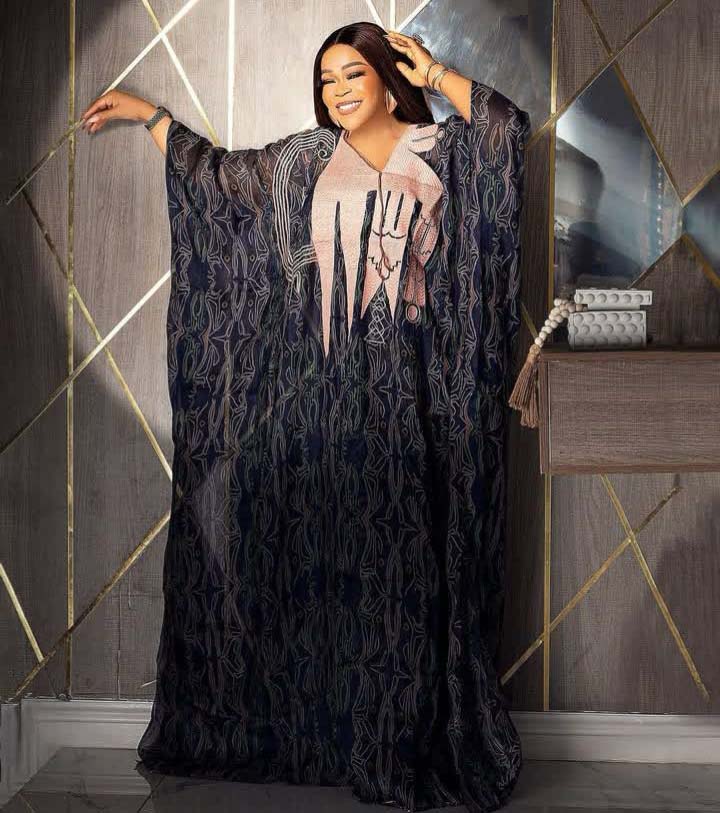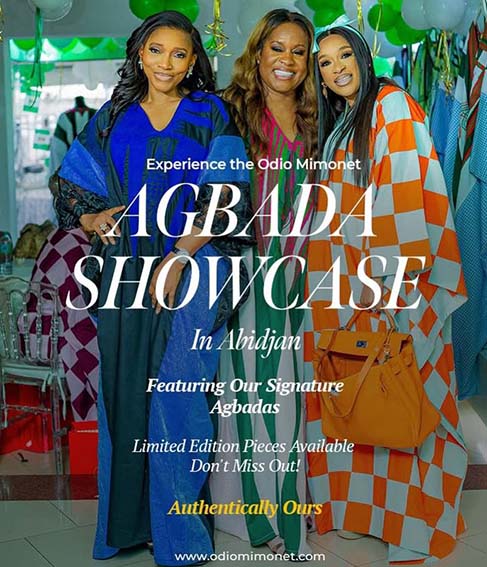By Josephine Awosode
Whether in the delicate layering of organza, the rhythmic structure of Aso-oke, or the modern reimagination of checkered kaftans, Odio Oseni’s work commands attention.
On October 5-6, 2024, Odio Mimonet unveiled a collection of boubous and draped agbadas, bridging Nigerian and Ivorian cultures. The checkerboard-print agbada, a bold interplay of burnt orange and navy, made a dramatic impact with its oversized shape.
The sheer organza-layered boubous, meanwhile, created an ethereal effect, their embroidery tracing the contours of the body in fluid motions. The precision in pattern alignment, particularly on the structured agbadas, revealed an expert approach to fabric manipulation.
The decision to feature agbadas in an Ivorian setting was significant. Traditionally, Nigerian agbadas have strong cultural ties to Yoruba and Hausa heritage, yet the choice of leaf-patterned fabrics – symbolic of nature’s cycles – established a cross-cultural dialogue, nodding to Ivorian textile traditions that emphasize organic patterns.

The garments exhibited a blend of double-stitched reinforcements at stress points (shoulders and side seams) and delicate blind hems that preserved the fluidity of the fabrics. The choice of French seams in some pieces, particularly those in sheer organza, minimized bulk while ensuring a polished interior finish. Subtle embellishments – beaded accents and embroidered details – were employed sparingly, reinforcing the brand’s philosophy of understated elegance. The pocket placements in agbadas, often an afterthought, were strategically positioned to avoid disrupting the garment’s drape.
The Agbada Showcase in Abidjan was more than a runway event, it was a cross-cultural dialogue. By introducing agbadas in a Francophone West African setting, Odio Mimonet positioned Nigerian textile craftsmanship within a broader African fashion landscape.
The use of Ivorian-friendly patterns (leaf patterns) alongside Nigerian staples (Aso-oke, agbada draping) signalled a harmonious blend of identities. While the collection excelled in textile innovation and construction, a greater exploration of functional diversity – such as modular elements – could push the brand into an even more dynamic space.

